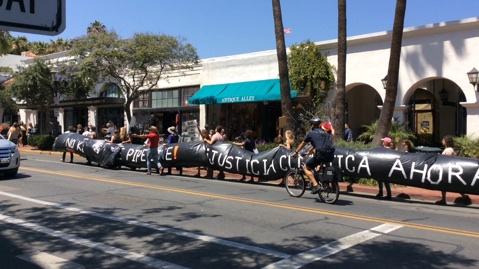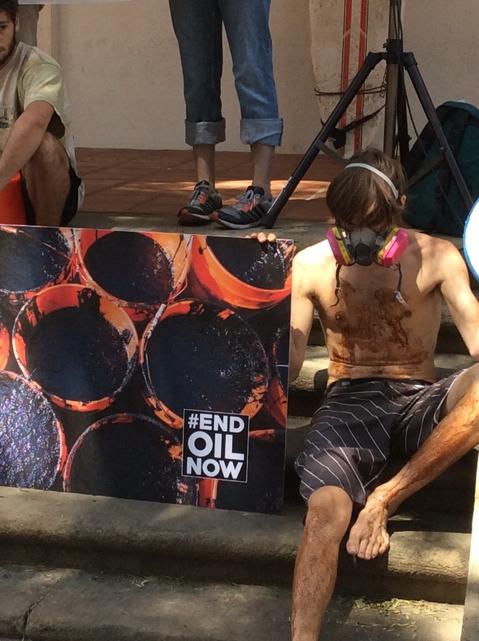Community Demands Transparency in Refugio Spill
Protesters Haul Faux Pipeline up State Street

Dozens of citizens marched through downtown Santa Barbara Saturday to protest the government’s stalled and opaque response to the Refugio oil spill and to claim a right to be involved. Carrying a dummy pipeline nearly half the length of a football field, community activists demanded change. They started from the waterfront and ended at the steps of Santa Barbara’s City Hall.
Following the oil spill at Refugio Beach on May 19, 2015, area-wide news agencies and environmental activists rushed to develop a clear synopsis of what had happened. As the news agencies continue their pursuit of information to report, environmental activists have demanded more transparency from the government’s multiagency response.

“We want them to be honest about the health effects,” said Lawrence Doherty of Santa Barbara. Doherty had been part of a rapid community response to the oil spill. He and a group of fellow students spent 10 hours filling 200 five-gallon buckets with crude oil. They did this all under the watchful eye of area law enforcement. According to Doherty, police officers informed them they were in violation of the law for trespassing, but allowed them to continue from 6:30 a.m. until 4:30 p.m. Shortly after they stopped, cleanup crews dressed in hazmat suits arrived on scene. Doherty said a number of his group are considering seeking medical advice after the onset of headaches.
Becca Claassen, a community organizer with Food & Water Watch, has an approach that safely puts hundreds of volunteers at the forefront of the cleanup efforts. Claassen called upon area government officials to request FEMA (Federal Emergency Management Agency) respond to the oil spill at Refugio Beach. FEMA’s extensive supply of protective equipment would allow a large number of volunteers to comb the beaches for oiled wildlife and large deposits of crude that have washed ashore. According to a 2013 report, FEMA can provide oil cleanup assistance when requested by another federal agency, such as the Environmental Protection Agency.
Nearly a week after the incident, questions remain about the lack of oversight on the aging underground pipelines, and who is ultimately responsible for the integrity of oversight measures. “A very likely conclusion is only the oil company was responsible for inspecting the oil line,” said Tim Rusmisel. The pipeline is owned by Plains All American Pipeline, a Houston-based company that over the past decade has sported a record of infractions and environmental contamination.



